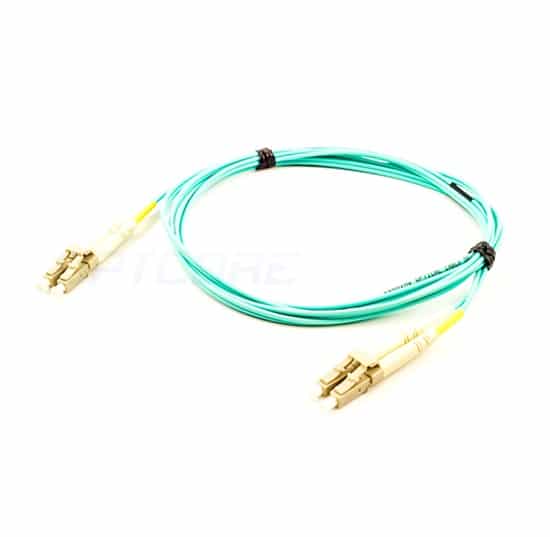
The ISO and TIA standardization organizations released the latest wiring standards ISO 11801 3rd and TIA-568.0-D in 2017. The new standard removes the traditional OM1, OM2 multimode fiber optic cable and adds OM5 broadband multimode fiber optic cable. ISO reduces the attenuation of OM5 cables from 3.5 dB/km for previous OM3, OM4 cables to 3.0 dB/km, and increases the bandwidth requirement at 953 nm.
ISO/IEC JTC1SC25 WG3 new project ISO/IEC TR 11801-9908 has released the first draft of WD to study wiring guidelines for high-speed network applications on multimode fiber, 10/40/100/200/ The transmission distances of OM3, OM4, and OM5 multimode fibers under 400G duplex and parallel network applications were studied.
OM5 multimode fiber supports more wavelength channels, so the direction is the same for SWDM4 with four wavelengths or BiDi with dual wavelength. Similar to BiDi for 40G links, SWDM transceivers only require a two-core LC duplex connection, except that SWDM operates on four different wavelengths between 850 nm and 940 nm, one of which is dedicated to The signal is transmitted and the other fiber is dedicated to receiving the signal.
As the physical transmission medium of data communication, optical fiber provides support for network equipment. The promotion of OM5 fiber cannot be separated from the support of network equipment manufacturers.
There are currently two technologies for transmitting high-speed networks with a small amount of fiber on the market: BiDi and SWDM4. From the perspective of the industry chain, OM5 multimode fiber and BiDi and SWDM4 equipment manufacturers form an industry alliance, but whether this ecosystem can mature depends on the shipment of these 40/100G network equipment and the large deployment of OM5 fiber. The OM5 multimode fiber test is identical to the traditional OM3, OM4 multimode fiber test equipment, and test procedures, and the user does not need to purchase additional test equipment.
The data center needs to be upgraded to 200/400G or higher in the future. It will have to face many optical module types such as MSA. In the absence of an IEEE standard project, users also need to care about whether there is open and standardized multimode wavelength multiplexing. Technology has emerged, and low-cost VCSEL 100G technology cannot achieve breakthroughs and other issues. Regardless of whether a parallel transmission optical module or a duplex transmission optical module is used in the future, network cabling is an important network infrastructure of the data center. It can be determined that the data center cabling must be open, scalable and flexible to support A variety of network architecture applications.
Responsible Editor: DJ Editor
Original Article Source http://www.jifang360.com/news/2019426/n8147118755.html